

The Last of the Giants: A Graphic Novel about Tor des Géants
At 330km with close to 100,000 feet of climbing and descending, Tor des Géants is one of the toughest trail races in the world. Everything that can happen out there, does: gear failure, severe mountain weather, exhaustion and hallucinations. But there are also beautiful sunsets, dramatic mountain ridges, remote Italian villages, and wild animals, too.
Run the Alps’ Doug Mayer has started and finished Tor three times. Now, he’s written a book that’s not just about the experience, but a story that brings in everyone from a Buddhist monk to a brain scientist to endurance experts, to try to make sense of what happens out there and why anyone would want to try an event like Tor.
The result is a new graphic novel from Swiss publisher Helvetiq, called The Last of the Giants. (The French edition is called Le Dernier des Géants.) For Run the Alps, Kim Strom got to ask Doug about the book, what he learned from his three big loops around the Alps of Northern Italy– and about the bigger topics the book explores–obstacles we all face in life, why we challenge ourselves, and how we grow.

Here’s our conversation:
Kim: Tor des Géants seems a little bit crazy. What drew you to it?
Doug: Honestly, if you had told me 20 years ago that I was going to run Tor des Géants once– much less three times– I would have given you a blank, confused stare. I think like all big adventures, you come to it step by step. For a number of years, I used to go to Courmayeur and watch “the Giants” finish. They were coming in, in all sorts of conditions: jubilant, exhausted beyond comprehension, fatigued-looking beyond belief…. You name it.
I started to wonder what was happening out there. I was really curious! And I wanted to go find out for myself. That’s really the core of how it happened. The rest is boring stuff like training and planning.
Kim: You’ve now finished Tor three times. What did you discover out there? What does happen during Tor?
Doug: It’s a hard thing to put your finger on, because there is much at work: you’re in these beautiful, wild places and you have just one job: move forward. But you add in fatigue and weather and technical challenges… and weird stuff starts to happen. What’s really going on is that your brain’s frontal cortex is getting tired, and when that happens, you lose your usual interface with the world. Everything goes directly to your brain. For me, that means that sunsets were more beautiful, obstacles seemed bigger than they were, everything was flowing right into me. It sounds crazy but that was my experience.
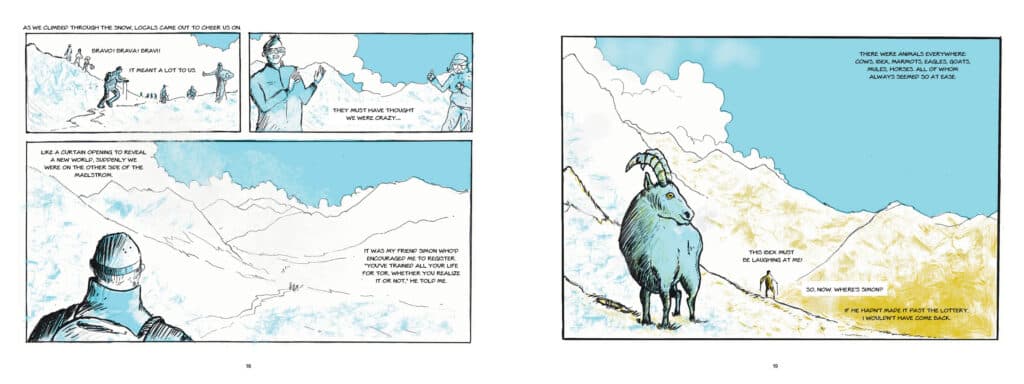
Kim: What did you learn about yourself out there?
Doug: Gosh. A lot. I mean, Tor is the one of the hardest things I will do in my life. I learned that you can be excited about a project, but you need an absolutely rock-solid “Why?” if you’re going to move forward when it gets hard. And I learned that I was more resilient than I thought. I don’t think that’s unique to me. I think it’s a common discovery if you have the right pieces lined up– training, a strong reason to be out there, a desire to finish.
I also learned that if you are going to try something hard, you need to make yourself vulnerable. You need to sort of plant a stake in the ground and say, “I’m going to try this!” And it might not work out. But for me, I also thought about how we define failure as a culture. I completed Tor each time, but if I hadn’t finished one time, I wouldn’t have considered it a failure, unless of course I didn’t give it 100%. The failing– and sorry, this sounds like a miserable cliché but it’s absolutely true– is not trying. Getting to the start line of any big project in life– personal, professional, physical, whatever– is already a kind of win. I absolutely believe that with all my heart.
Kim: Who decided on the graphic novel format?
Doug: While I was working on other projects, like The Race that Changed Running, I would talk to Hadi Barkat at Helvetiq about Tor. It’s not hard for Tor to come alive in your mind– big mountains, remote villages, men and women out on the trail night and day, giving everything they have… I imagine he started visualizing it. The story lends itself to being illustrated.
I’m a writer, though – my brain isn’t wired to think about all the ways illustration can tell a story. Talking to William, the illustrator and co-writer, was enlightening. Colors express the feelings: red for anger or tension, blue for cold or calm, yellow for warmth. Images can be interwoven and placed horizontally or vertically. You can even play with the reading direction to convey a sense of dizziness or imbalance. And in a graphic novel, you’re not obligated to tell the entire story. We can prune the narrative to focus on the core components. Sort of like Tor itself, we get to play with the space-time continuum!

Kim: Can you tell us a bit about the illustrator?
Doug: William Windrestin was amazing. Helvetiq located him and it was one of the great things that happened to this project, along with our editor, Aude Pidoux. William’s a filmmaker and editor, so he had a sense for the storyline and the plot. He brought a lot of enthusiasm and ideas to the table.
Last of the Giants was his own sort of Tor. I can’t say I really understand the work of an illustrator, but I can tell you that he absolutely busted his ass– sorry for the American slang but that’s the best way I can find to describe it– on this project, as did the editor, Aude. It was not an easy project. It evolved a lot and we all pushed hard to try to create something great.
Kim: How did he go about creating the illustrations?
Doug: It was a meticulous labor of love, as far as I can tell. First, he had to decide whether to present the character from above or below. Is he walking to the left or the right? Is it a close-up or a broader view?
Honestly, the process sounded so laborious to me– first William made hand-drawn sketches, then illustrated the entire book in pencil. Then, he’d go through the drawings one by one—still by hand—using India ink to make a nice black outline. Next, he scanned them and colored them on the computer with a graphics tablet. Finally, the drawings were edited to add the text.
He redrew the starry sky on the cover almost 50 times! He told me he wanted a Milky Way style sky that looked a bit like the dragon’s face. And if you squint, you can see it!
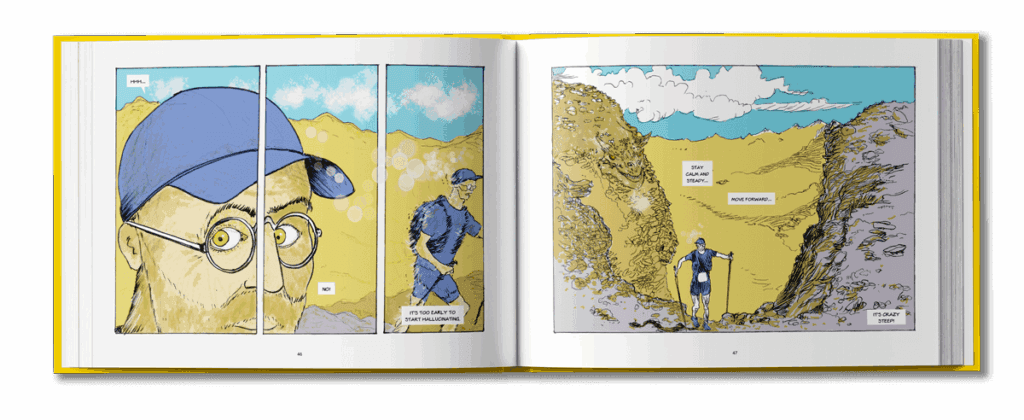
Kim: The main character, Sam Hill– is he based on you?
Doug: In part. Sam is based on a number of people I know who did Tor. I like to think he has more emotional baggage and issues to resolve than I do! He’s out there in the mountains, trying to sort through things in his life that are holding him back. Issues about himself that he doesn’t quite yet fully understand.
When you do something like Tor, you hit walls– not just physical walls, but you confront yourself in a very powerful, direct way. You need to find a way through that, and if you can do that, there’s a hell of a lot of learning that goes on. The Stoics talk about how “the obstacle is the way.” And they don’t just mean a big, technical climb in the Alps. Sometimes, the biggest obstacles are the stories we tell ourselves about who we are, and what we are capable of accomplishing.
Sam’s story is sort of everyone’s story, right? We all have stuff like that in our lives. Our goal is to see them, figure out what is powering them, befriend them and then grow. Does that make sense, or am I getting too heavy here?
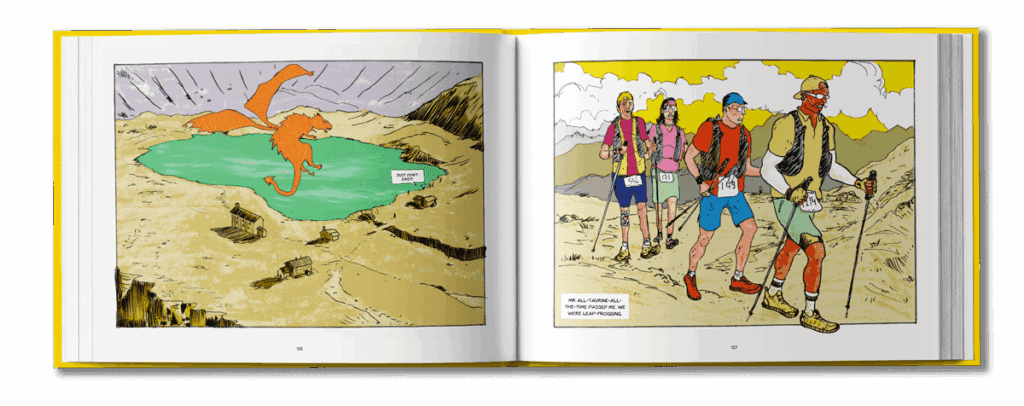
Kim: Is this the experience Tor calls Meeting the Dragon?
Doug: It is. One of the fun things that separates Tor from being just another trail race is the mythology around it. Tor has this moment called Meeting the Dragon. In Tor, you hit the wall every day– there are plenty of moments when you crash and need to rest, fuel, and move on. But a lot of participants also experience a moment when they feel that they simply can’t go on, that Tor is so much harder than they ever could have imagined. That’s when they need to find another tool, so to speak– another way to move forward. None of the usual ways are working anymore.
Sometimes, maybe even often, this forces a kind of fundamental rethinking of our values. It’s a process of peeling back the onion to find a “why” that is deeper than validation from friends and family, or ego-driven ideas like goals or finish times for a race. It’s hard to explain, but for many of us who have done Tor or something like it, it’s very real.
[Editor’s note: You can read more about the idea of Meeting the Dragon.]
Kim: What would you say to someone who wants to try Tor?
Doug: Do it. But do it with your eyes wide open. I guarantee you there will be moments that will crush you, swallow you whole and spit you out. But that’s the point, right?
There’s plenty of other stuff to do to get ready: training, understanding how your body works when it gets super fatigued and sleep-deprived, dealing with environmental challenges like snow in the mountains, heavy rain, high winds, whatever. But the single most important thing is knowing why you want to do it. I can’t say it better than Chris Hauth, a wonderfully insightful former Olympic swimmer and world-class triathlete. Now, he’s an endurance and mindset coach. Here is how he put it in the book:
When you’re alone out there, you need something deeper than the shallow ego telling you, “I’m doing this for this and this and this… That doesn’t work. Therein lies the difference between motivation versus drive. Motivation is merely the spark. It’s the match that lights the fire. Drive is that fire, it comes from purpose and a deeper why.
You need to have a conversation with yourself. You never want to be out there asking, “Why am I doing this?”
I also think the meta idea of Tor is larger than just a physical event. By that I mean, your own Tor can just be something huge in your life that you want to accomplish. Moving to a foreign country, a big career change, that kind of thing. And what we learn from meeting the dragon can come from something we didn’t pick, like a bad medical diagnosis, or the death of a loved one, or losing a dream job.
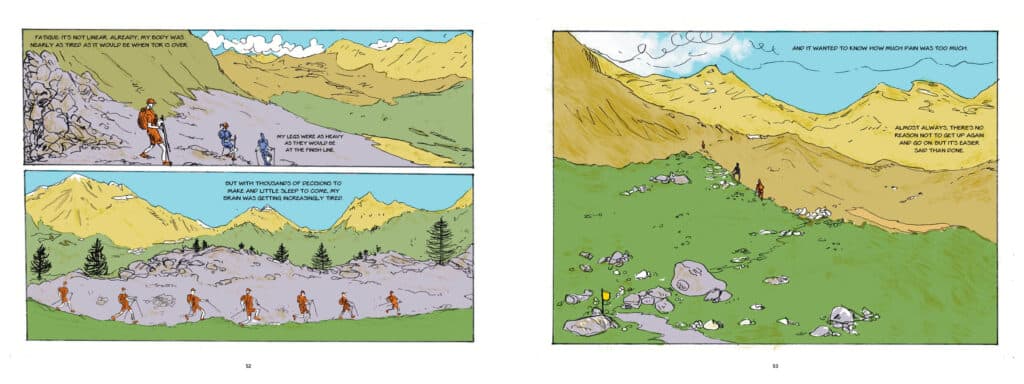
Kim: Does anything come after Tor? Is there a next challenge for you?
Doug: It’s hard to know how to answer this question. I think I tend to sit with project ideas for a while and see if they feel right to me, whether it’s a book or a trail running adventure of some kind. But I know I do like to put myself out there to see what happens. So, I have two big things that kind of scare me that are coming up. I’m learning to parasail this summer. That has me excited and a bit scared, which is a good space in which to exist– you’re pushing boundaries, right? And at the end of the summer, I’m doing PTL, UTMB’s 300km event, with two friends from Run the Alps, Giles and Paul. That’ll be a good challenge, since there’s a very legit mountaineering component to PTL. You need to have your sh*t together.
Kim: And, of course, where and when can I get a copy of The Last of the Giants?
Doug: The book came out this summer in English and French. It’s now available in Europe and the UK, and will be in the US this September though some retailers might have it earlier. We have a few copies in our shop, too!
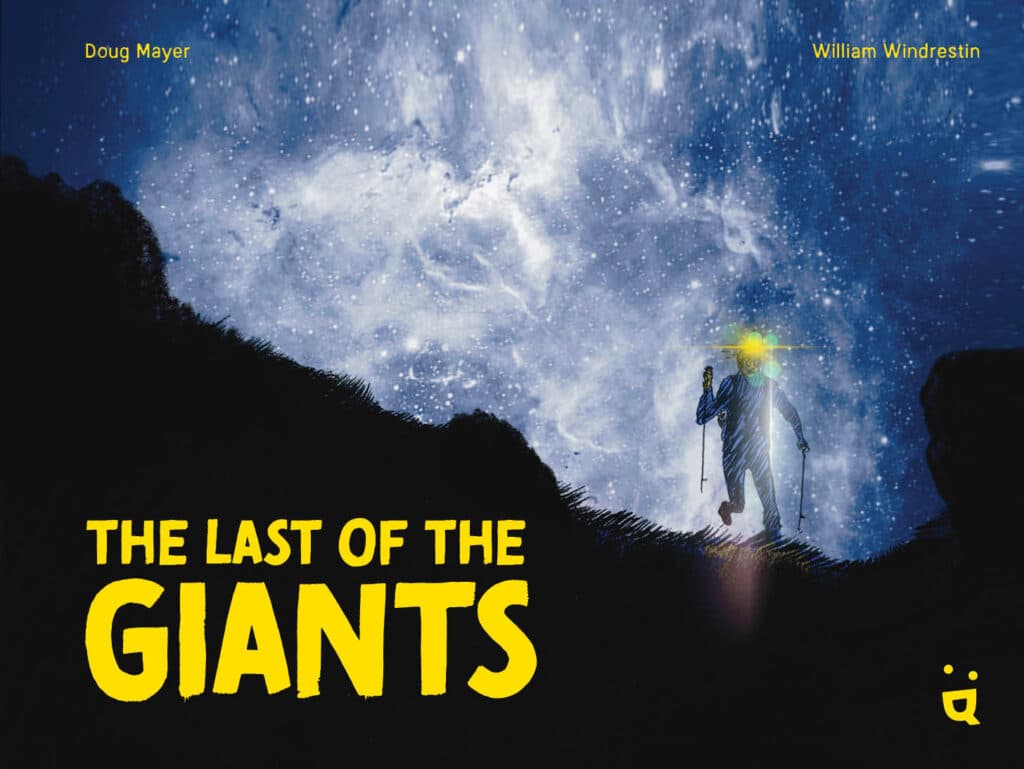
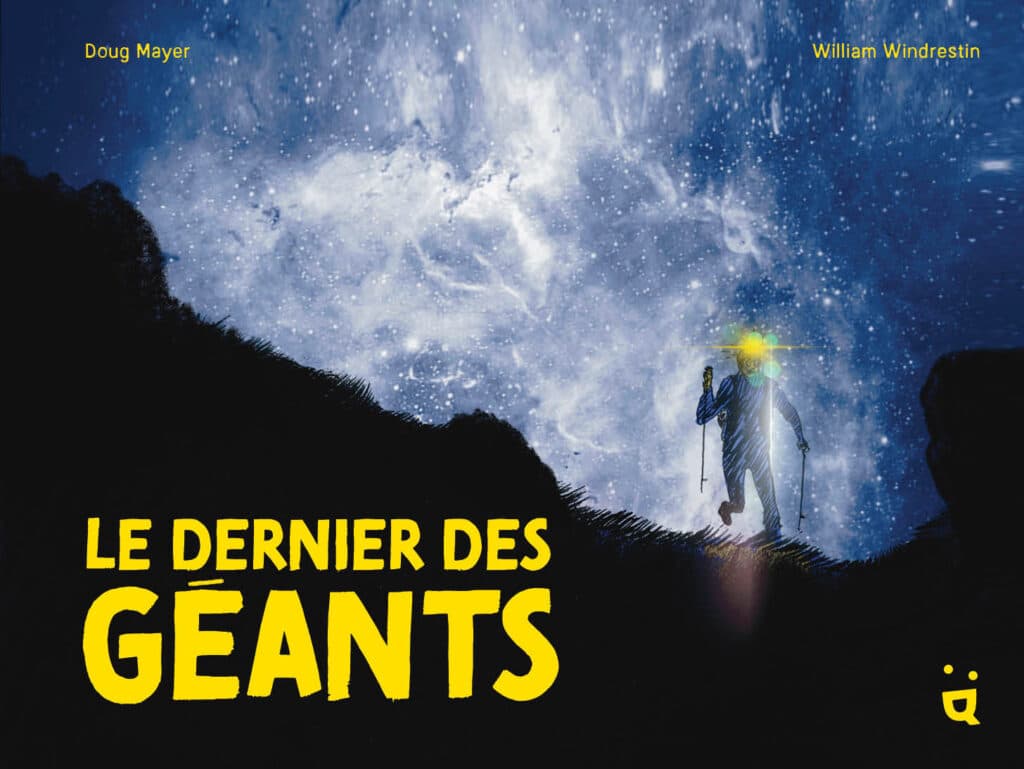
More from Run the Alps about Tor des Géants
A Beautiful Adventure: Tor des Géants
Meeting the Dragon: The Mythology of Italy’s 330-km Tor des Géants
Here’s the Research Scientists have Done on Tor des Géants Runners
Meet Ivan Parasacco, The Philosopher King behind Tor des Géants
Edition Zero: Behind the Scenes Developing Tor des Géants
“Are You Experienced?” Running Italy’s Tor des Géants
Running Tor des Geants: Courage isn’t Always Quite What it Seems